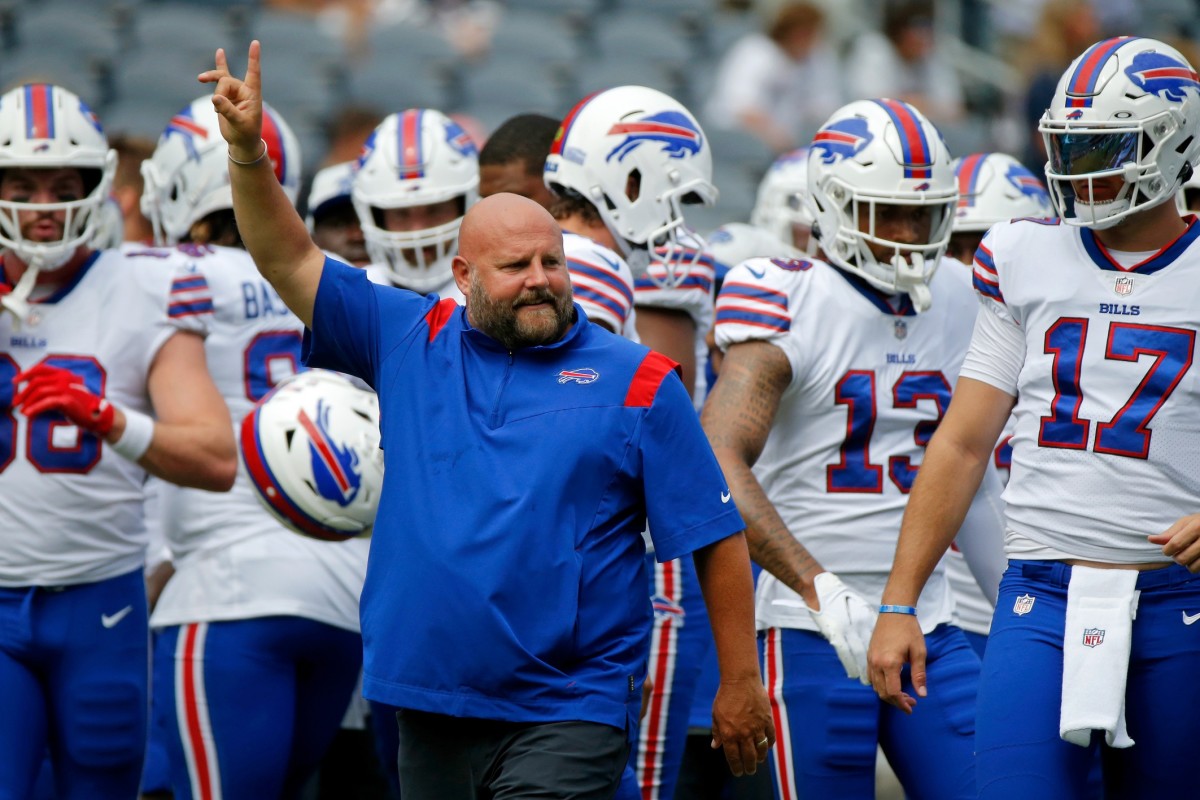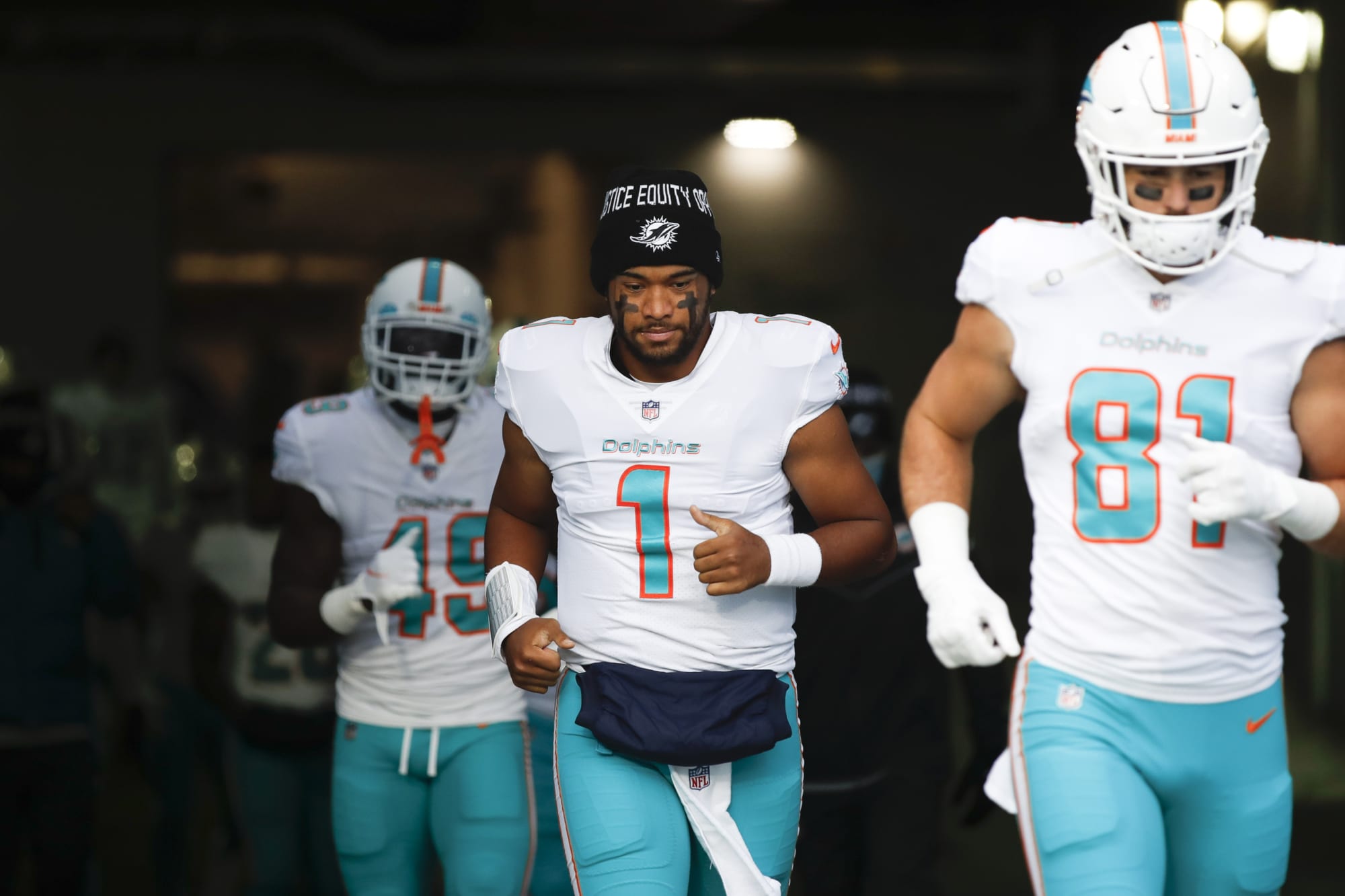Will Florida Gators, FSU football and Miami ever be the Big Three again?
/cloudfront-us-east-1.images.arcpublishing.com/tbt/PIVD46N5EREQHDAJFBSCU3JIVM.png)
After dominating the 1990s in one of the greatest runs in the history of college football, the Big Three roared into a new century with no signs of slowing down.
But Harvard, Yale and Princeton soon faded into obscurity.
“I always tell people: The game of college football in 1869 looked a lot different than it does today,” said Jeremy Swick, the College Football Hall of Fame’s curator and historian.
Just as the game has evolved since the original Big Three dominated the 19th century, so, too, has it changed since Florida’s Big Three ruled from 1991-2001.
The recruiting world shrunk. In-state competition swelled. Conferences strengthened. The baby boom slowed. By the time Florida, Florida State and Miami could truly appreciate their empire, it had already fallen.
“I think we took it for granted,” said Joey Johnston, who covered its rise and fall for the Tampa Tribune. “It was just what you expected.”
But what’s fair to expect now, in an era far different from the one they ruled together a quarter-century ago? Can the Gators, Seminoles and Hurricanes ever be the Big Three again?
Historically, the outlook is grim. Dynasties are rarely duplicated. But lower the standard slightly, and a revival looks possible, if not likely. Some believe it’s already underway.
Though the Big Three will almost certainly fail to recreate its unprecedented peak, it doesn’t have to be broken.
The case against a repeat
Midway through the Big Three’s arrival — the 1988 Sports Illustrated cover story sent as a postcard from the new center of the college football world — there was a notable line from Miami assistant Butch Davis.
“When you have three major schools competing in one state,” Davis said, “you usually have the power, the middle-of-the-road school and the doormat.”
Florida was an outlier.
In the history of college football, a single state has produced a pair of top-five teams only 19 times. Florida’s Big Three had 13 of them.
And that’s only two great teams at the same time. Three at once is nearly impossible.
In the first half-century of the Associated Press poll, Indiana was the lone state to field a trio of top-10 teams in the same year (Notre Dame, Indiana and Purdue in 1967). Florida did it four times in one decade.
The Big Three, then, was an anomaly — a historical fluke unlikely to recur.
“It’s tough enough for one to do it again,” said Lew Freedman, author of “The Rise of the Seminoles: FSU Football Under Bobby Bowden.”
“But to (have) all three be happening at the same time, the odds get extended, and circumstances become different.”
Especially if those different circumstances create more challenges.
The Gators’ title path will grow tougher when Texas and Oklahoma join the SEC on or before 2025. FSU and Miami don’t share that concern, but their conference has its own glaring issue.
Money.
In the 2018-19 fiscal year, the ACC paid its schools almost $29 million apiece. That’s about $16 million behind the SEC. The gap is set to explode, according to the sports and entertainment consulting firm Navigate.
Fueled by an upcoming ESPN deal, the SEC will pay its members more than $105 million each in 2029, Navigate estimated this spring. The Big Ten was next at $95 million (before it announced the additions of USC and UCLA). The ACC? It is fourth among Power Five conferences at $55 million.
The difference would be so large that the Gators could cover the combined buyouts of Dan Mullen, Willie Taggart, Jim McElwain and Will Muschamp and still earn $10 million more in conference payouts than FSU. And because the ACC is seemingly locked into its media-rights contract until 2036, FSU and Miami will have a hard time catching up.
“It’s looking more and more like the Power Two if things stay status quo,” said Matt Balvanz, Navigate’s senior vice president of analytics and innovation.
And unless the Seminoles and Hurricanes can escape the grant of rights that binds them to the ACC for another 14 years, two of Florida’s Big Three will be outside that Power Two.
The implications of a $50 million chasm are hard to predict at a time of industry-wide upheaval. Will Mississippi State start poaching coaches from Miami by doubling salaries? Will FSU have to choose between funding an elite football program and chasing titles in softball and soccer? Will the Seminoles and Hurricanes be able to keep up if programs start paying players directly?
“You’ll just have to do more with less, relatively speaking,” Balvanz said. “But we’ve seen that equation work successfully in the past.”
One school that has made that equation work is UCF, which leads to another obstacle.
The Knights have chipped away at the Big Three’s margins despite being in the mid-major American Athletic Conference. Any disadvantages from that Group of Five stigma will disappear when UCF joins the Big 12 next summer.
“It doesn’t mean they’re about to be the fourth team in the top 10 or top 15,” said Marc Daniels, the voice of UCF sports. “But it’s not like they’re stepping into the pool and the other three have been dominating the deep section.”
Instead, they’re stepping into a pool that’s shallower than the one UF, FSU and Miami used to control. That’s because retirees, not recruits, have been flooding the state.
Florida’s fertility rate in 2000 was half its 1960 peak, said Stefan Rayer, the population program director of UF’s Bureau of Economic Business and Research. The fastest growing metro area last decade wasn’t a football hotspot like Miami or Tampa. It was a 55-and-up community, The Villages.
After Florida’s high school football participation spiked by 47% from 1980-2011, it has started to fall, according to the National Federation of State High School Associations. That means the Big Three faces more competition for fewer players.
“The pie may be cut into too many slices now,” longtime Hillsborough High coach Earl Garcia said.
Put them all together — historical improbability, bigger conference challenges and smaller recruiting slices — and a Big Three renaissance seems impossible.
“It was a period piece,” said Johnston, the former Tribune writer and current USF sideline reporter. “It’s kind of like, will the Charleston ever come back as a dance? It was something that happened at that time, and we’re onto a different time.”
Unless the past teaches us a different lesson.
How the Big Three could become the Big Three again
Few men know more about the Big Three’s rise and fall than former Miami head coach Randy Shannon. He won two national titles as a Hurricanes assistant, spent three seasons as the Gators’ defensive coordinator and is in his second year at FSU.
When he looks at the Big Three’s history, he doesn’t see a one-time aberration. He sees hope.
“All the Big Three will get it done,” Shannon said, “because it’s been that way before.”
The path to a Big Three 2.0 is complicated, expensive and involves multiple factors beyond any program’s control. But here’s what it looks like.
It starts the same way the initial rise did, with big-time hires who can coach and recruit at an elite level. We don’t know yet whether FSU’s Mike Norvell, UF’s Billy Napier and Miami’s Mario Cristobal can. But seven consecutive coaches have failed to last five full seasons. Eventually that awful miss rate will even out. A little more patience from boosters and administrators wouldn’t hurt, either.
With the right people in place, the Big Three must return to the right approach: dominant local recruiting. The programs don’t sit in a talent desert like another dormant 1990s power, Nebraska. Florida remains one of the four biggest football states and borders another (Georgia).
“There’s no question that the three programs can be very, very strong nationally just because of the great talent that we have here,” Norvell said.
The challenge is to keep all that great talent from leaving.
It starts, obviously, with winning.
“All three programs have got to have success,” said college football commentator Forrest Conoly, an offensive lineman on FSU’s 1993 title team. “With the more success that they’re able to have, the more opportunity I think that they will be able to pull all those recruits.”
Especially if they show the all-in commitment necessary to land them. When Garcia — a prep coach with four active NFL players and almost 50 years in the profession — says he doesn’t have contacts at the Big Three, that’s a damning indictment on the Gators, Seminoles and Hurricanes.
But it’s one that can be fixed. And will be, if the staffs are as dedicated to in-state recruiting as they say.
“I think history would indicate that when Florida has a really good football team, it starts right here in our backyard and works out,” Napier said. “So that’s the approach that we will take…”
If the Big Three aren’t successful immediately, they’re well-positioned to exploit something Bobby Bowden and Jimmy Johnson couldn’t: the transfer portal.
Receiver Trevon Grimes (Ohio State), offensive lineman Dillan Gibbons (Notre Dame) and running back Henry Parrish (Mississippi) were all top-400 national recruits who left the state coming out of high school. All three returned as transfers, in part to be closer to home. And all three made (or are expected to make) significant contributions; Grimes caught 14 touchdowns at Florida, Gibbons was one of the ACC’s top guards last season at FSU, and Parrish will be in Miami’s backfield rotation this fall.
Even with the portal, the Big Three won’t land every big name, the way they seemed to do three decades ago. They’ll never regain the advantages they held in a bigger, pre-internet recruiting world. But the Gators, Seminoles and Hurricanes should do better than whiffing on eight of the top 12 homegrown prospects, as they did last cycle.
They must also continue to take the right approach by catching up in facilities and infrastructure.
The Seminoles hired a handful of support staffers this offseason, including a general manager of personnel, two scouting directors and a director of sports science. They aim to break ground on their long-awaited football-only complex before the end of the year.
“When certain schools in this area started establishing (big staffs), everyone is going to want to catch onto that,” FSU general manager of personnel Darrick Yray said. “Look no farther than what happened in Tuscaloosa.”
To land Napier — a product of that factory in Tuscaloosa — Florida agreed to raise its assistant coaching pool salary by more than $1 million and dedicate $5 million more for his army of support staff. The $85 million football training center the Gators announced under McElwain and started building under Mullen is finally set to open this summer.
After ESPN’s Kirk Herbstreit called out Miami’s administration in September, The U started making what Cristobal called a “massive investment” in the sport. Its personnel expenses are expected to be the largest in the ACC and helped attract marquee names like ex-USF/Texas coach Charlie Strong (co-defensive coordinator), Pro Football Hall of Famer Jason Taylor (defensive analyst) and NFL executive and former Miami star Alonzo Highsmith (general manager of football operations). The Hurricanes are also exploring major facilities upgrades, including an expansion of the indoor practice facility they opened in 2018.
“It’s been done before with a lot less,” Cristobal said during his introductory news conference. “Now it’s an opportunity to take it to a new level with a lot more.”
From there, a second coming of the Big Three depends on a handful of external factors.
The ACC’s financial gap will shrink if Notre Dame finally joins as a full-time member. The issue would also become moot for FSU and Miami if they find a way to join the SEC or Big Ten, or if the nation’s top programs splinter off into one massive premier league.
Napier discussed Florida’s paltry high school coaching stipends with Gov. Ron DeSantis in February and said the politician was “very receptive and certainly very aware” of the issue. The Florida Coaches Coalition is considering a class-action lawsuit to force raises. If lobbying or litigation lead to larger salaries and better prep football, the effects will trickle up to the Big Three.
Though Florida was a pioneer in name, image and likeness legislation, the Big Three risks being stuck at a competitive disadvantage in that quickly evolving industry. Seminoles athletic director Michael Alford has said they “can’t compete” with other states because Florida’s law has more restrictions on the involvement of schools and booster organizations. The market is unsettled and murky, but Florida, FSU and Miami cannot fall behind in this space the way they did in facilities.
[ ARIELLE BADER | Times (2021) ]
Finally, they need some help from nearby powers. Perhaps Alabama slips whenever Nick Saban finally retires, as Florida did after Steve Spurrier resigned. FSU’s dynasty began to wobble after two of Bowden’s most trusted assistants, Mark Richt and Chuck Amato, left for head coaching jobs; maybe Clemson stumbles, too, after losing coordinators Jeff Scott (USF), Brent Venables (Oklahoma) and Tony Elliott (Virginia) to head coaching jobs in the last two and a half years. Their regressions would make it easier for the Big Three to regain ground on the field and on the recruiting trail.
“They have a golden opportunity,” CBS Sports’ Kevin Carter said.
But can they take advantage of it?
Where they’re headed
The future of the Gators, Seminoles and Hurricanes probably won’t look as rosy as it did 20 years ago when Miami was crushing Nebraska to win the state’s fifth national title in 11 years. Too many of the factors that fueled the Big Three’s rise are gone and never coming back.
But their future also won’t look as rotten as it did last season, when Florida and Miami fired their coaches and FSU stumbled through another fall of failure.
“I think that they’re all somewhat on the way up,” 247Sports’ Bud Elliott said, “or at least they’re not careening toward the bottom.”
The most realistic outlook for UF, FSU and Miami, then, is somewhere in the middle, closer to the 1991-2001 peak than the rock bottom of 2021 and far from the irreversible irrelevance of the original Big Three.
Will the Gators, Hurricanes and Seminoles all finish in the top 10 together four times in one decade? No. They almost certainly won’t all win national titles in a six-year span again, either.
But can they make a future 12-team playoff together every now and then? Maybe.
The Big Three’s glory days are likely behind them. Their worst days probably are, too.
Historical anomaly
How some other notable in-state groupings compared to the glory days of Florida’s Big Three:
Texas and Texas A&M: Haven’t finished in the top 10 together since 1941
USC and UCLA: Last finished in the top 10 together in 1988
Pitt and Penn State: Both finished in the top five in 1981 and in the top 10 three more times over six years. Haven’t accomplished that feat since.
Alabama and Auburn: Have finished in the top 10 together four times in the last 40 years
Georgia and Georgia Tech: 2014 was the first time both finished in the top 10 since 1966
Michigan and Michigan State: Finished in the top 10 last year together for the first time this century.
Florida, Florida State and Miami: Had at least a pair of top-10 teams every year from 1987-98, plus 2000-01. Only matched that feat once since (the Gators and Seminoles in 2012).
• • •
Never miss out on the latest with the Bucs, Rays, Lightning, Florida college sports and more. Follow our Tampa Bay Times sports team on Twitter and Facebook.


